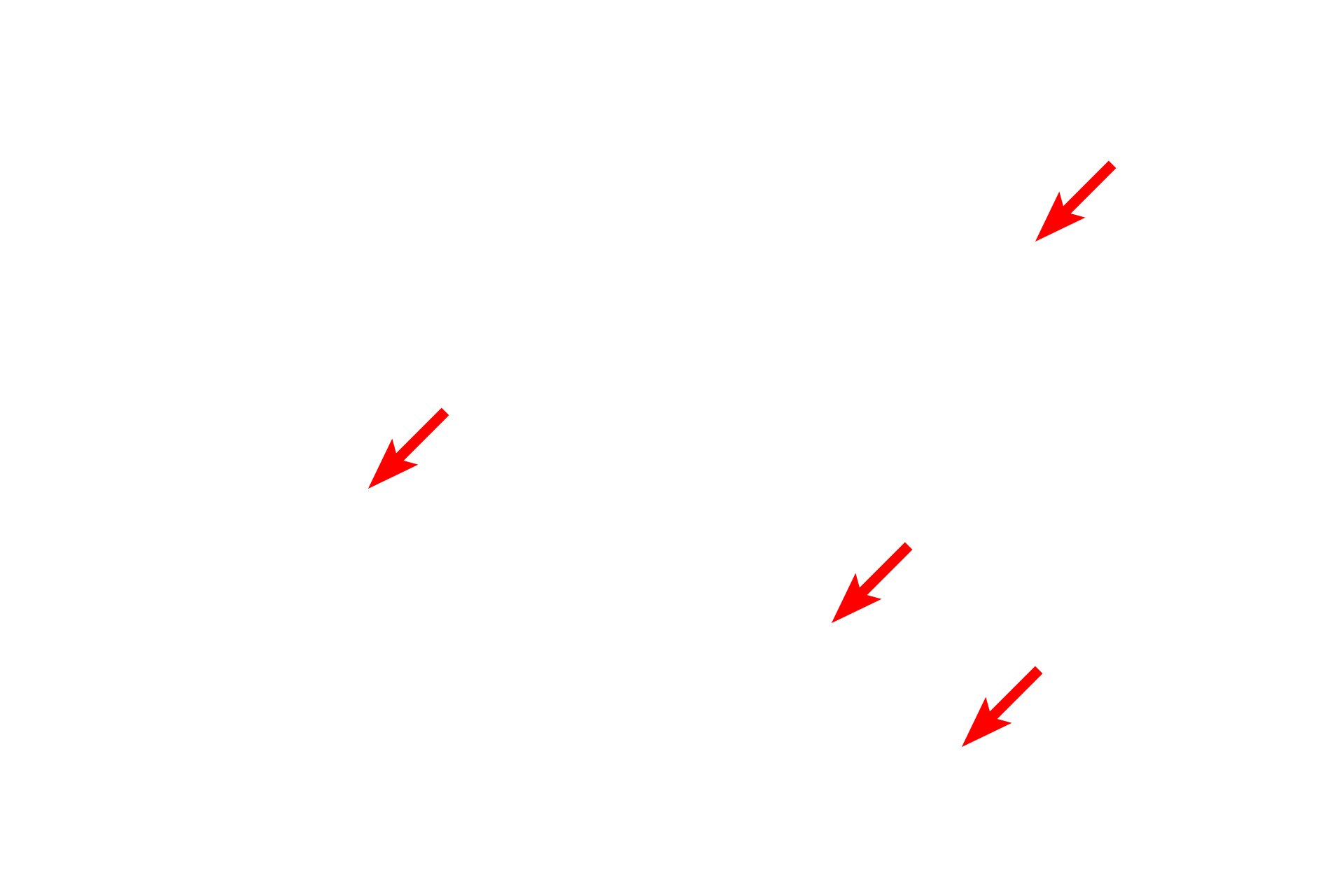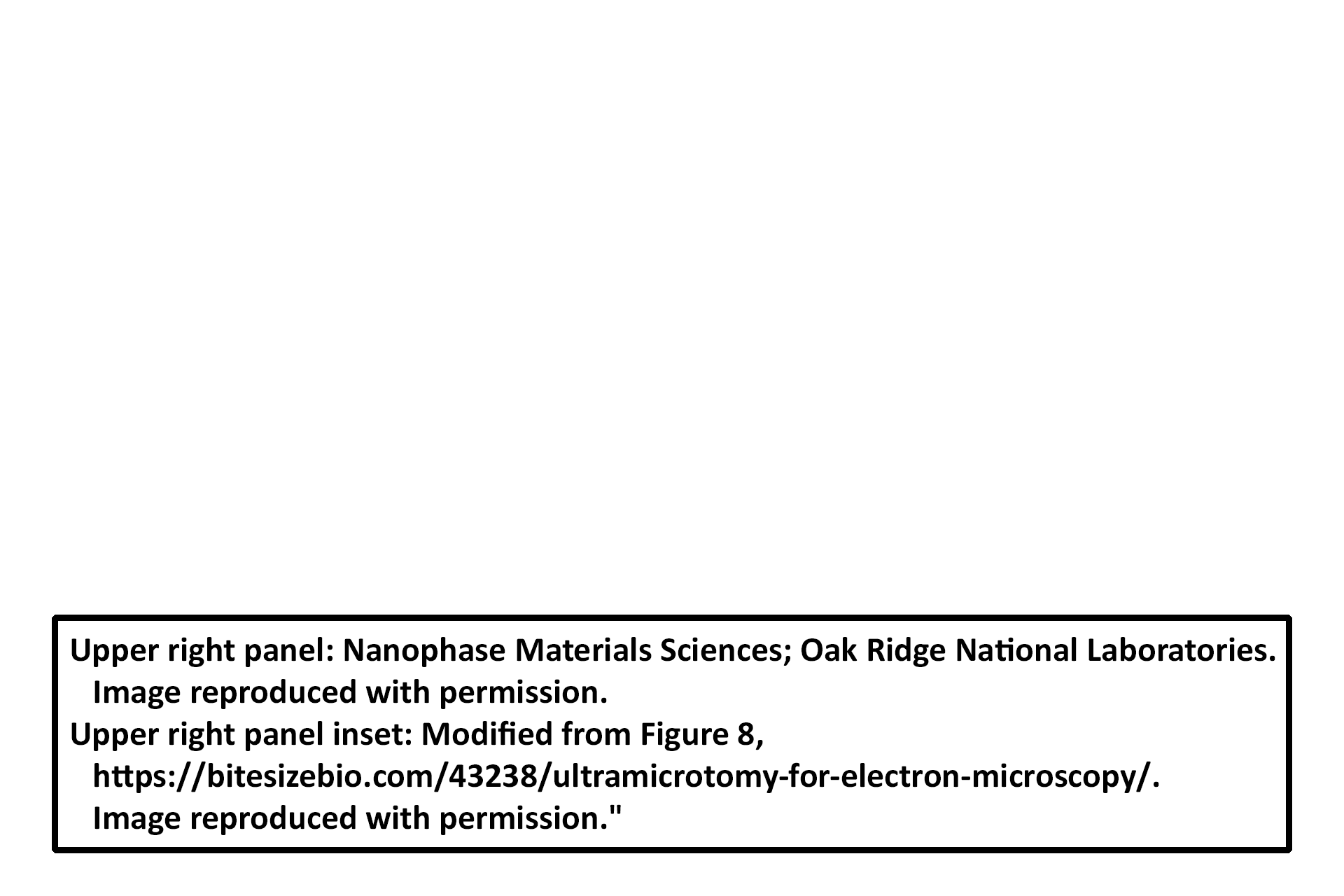
Sectioning – Electron microscopy
The sectioning process for electron microscopy is analogous to that for light microscopy. Sectioning is performed on a highly precise rotary microtome called an ultramicrotome, pictured here, which is capable of producing the ultrathin sections, generally 30 to 60 nm thick, required for electron microscopy.

Inset area
The sectioning process for electron microscopy is analogous to that for light microscopy. Sectioning is performed on a highly precise rotary microtome called an ultramicrotome, pictured here, which is capable of producing the ultrathin sections, generally 30 to 60 nm thick, required for electron microscopy.

Tissue block >
Tissue is routinely embedded in epoxy resin which provides the additional support needed for producing thin sections. Tissue samples for electron microscopy are much smaller in size than those used for light microscopy. The tissue block, is secured to the moveable arm of the ultramicrotome that moves past the knife with each successive rotation of the handwheel. For an ultramicrotome, the handwheel is generally motor-driven.

Tissue
Tissue is routinely embedded in epoxy resin which provides the additional support needed for producing thin sections. Tissue samples for electron microscopy are much smaller in size than those used for light microscopy. The tissue block, is secured to the moveable arm of the ultramicrotome that moves past the knife with each successive rotation of the handwheel. For an ultramicrotome, the handwheel is generally motor-driven.

Epoxy resin
Tissue is routinely embedded in epoxy resin which provides the additional support needed for producing thin sections. Tissue samples for electron microscopy are much smaller in size than those used for light microscopy. The tissue block, is secured to the moveable arm of the ultramicrotome that moves past the knife with each successive rotation of the handwheel. For an ultramicrotome, the handwheel is generally motor-driven.

Tissue block holder
Tissue is routinely embedded in epoxy resin which provides the additional support needed for producing thin sections. Tissue samples for electron microscopy are much smaller in size than those used for light microscopy. The tissue block, is secured to the moveable arm of the ultramicrotome that moves past the knife with each successive rotation of the handwheel. For an ultramicrotome, the handwheel is generally motor-driven.

Handwheel
Tissue is routinely embedded in epoxy resin which provides the additional support needed for producing thin sections. Tissue samples for electron microscopy are much smaller in size than those used for light microscopy. The tissue block, is secured to the moveable arm of the ultramicrotome that moves past the knife with each successive rotation of the handwheel. For an ultramicrotome, the handwheel is generally motor-driven.

Diamond knife >
For routine electron microscopy, the knife is an industrial diamond that has been sharpened to an extremely fine edge. The knife assembly contains a water reservoir for collecting the sections.

Sections >
As sections are generated, they float onto the water contained in the knife holder reservoir and collected onto circular copper mesh grids.

Copper grids
As sections are generated, they float onto the water contained in the knife holder reservoir and collected onto circular copper mesh grids.

Image sources >
Upper right panel: Image used with permission from the Center for Nanophase Materials Sciences, Oak Ridge National Laboratories. Upper right panel inset: Image used with permission from BiteSize Bio (https://bitesizebio.com/).